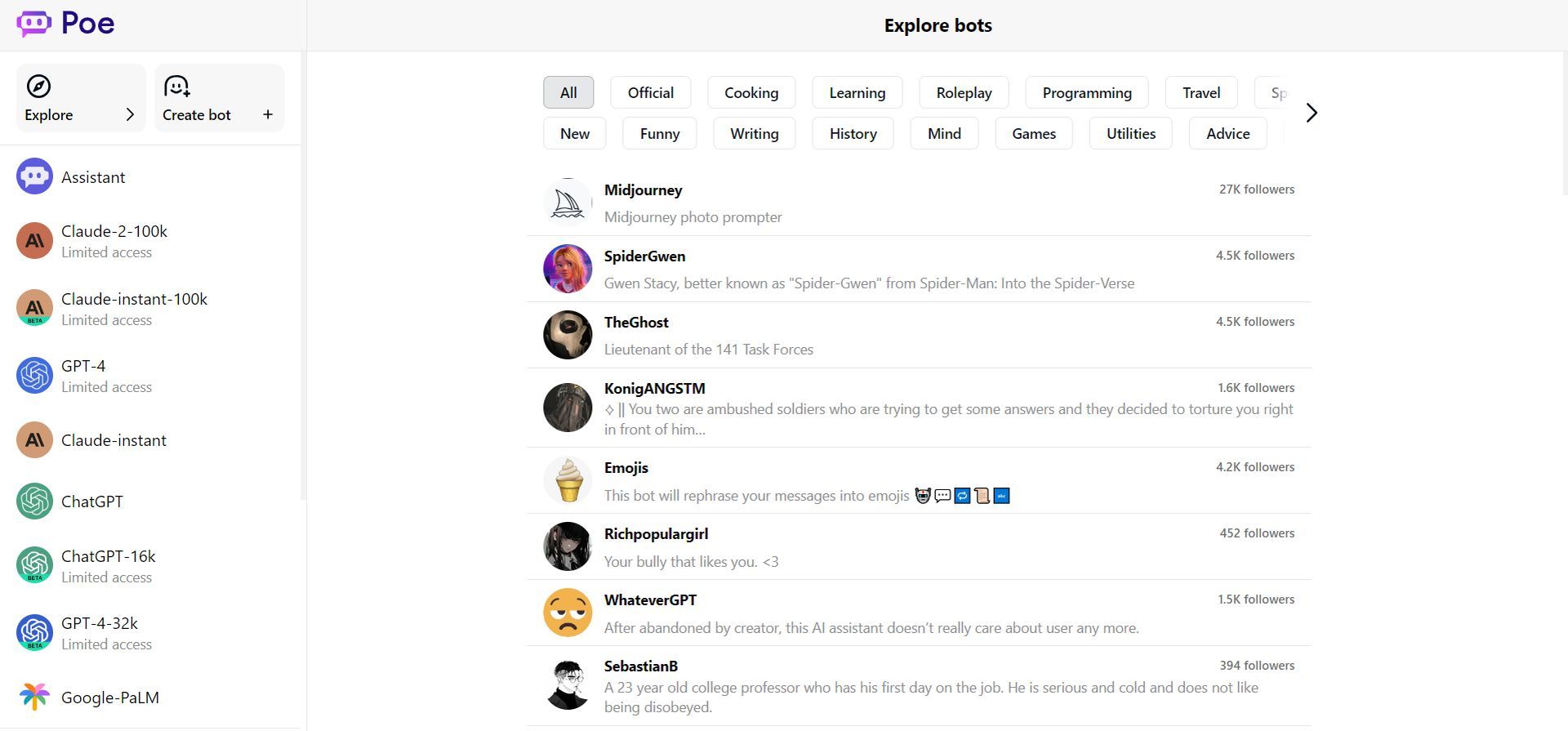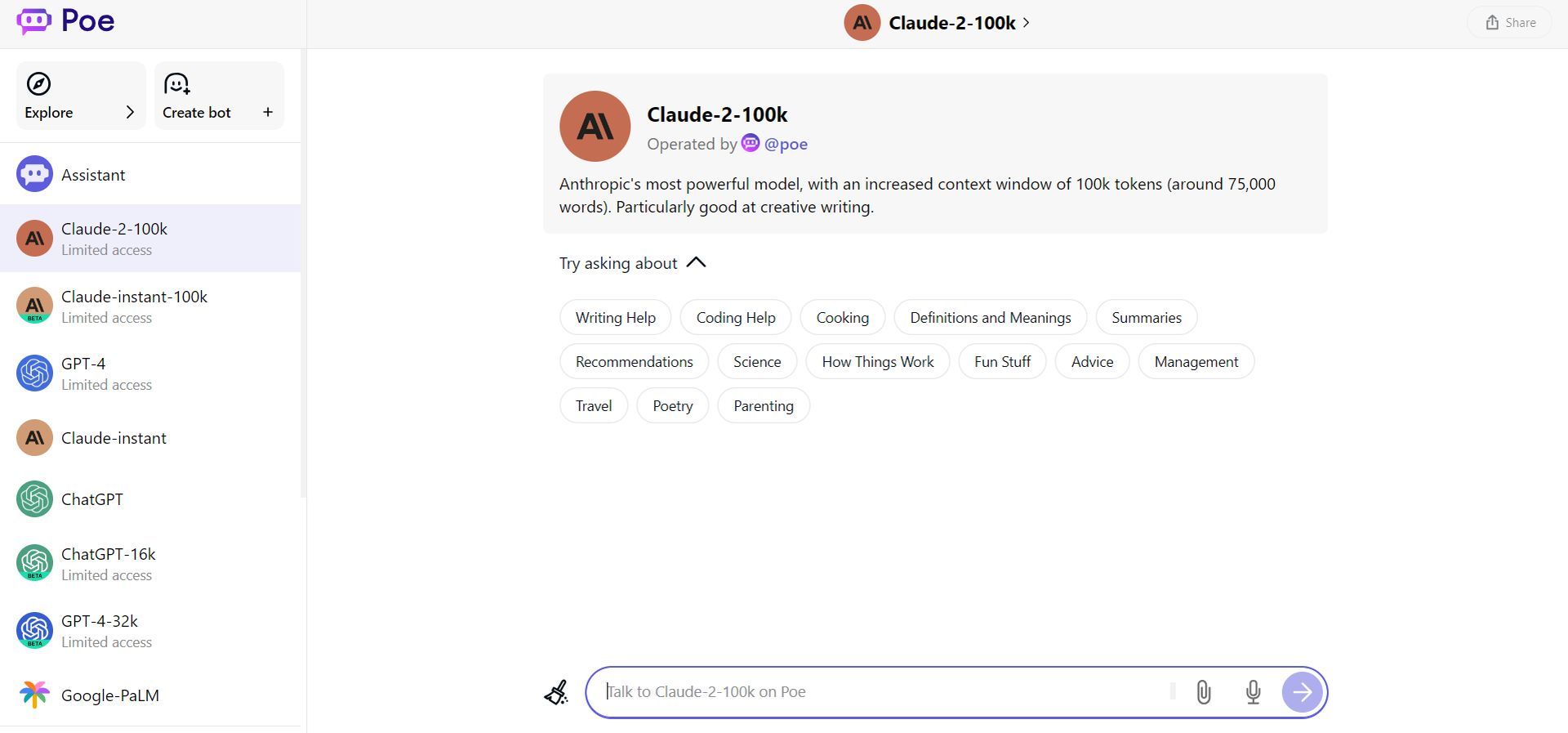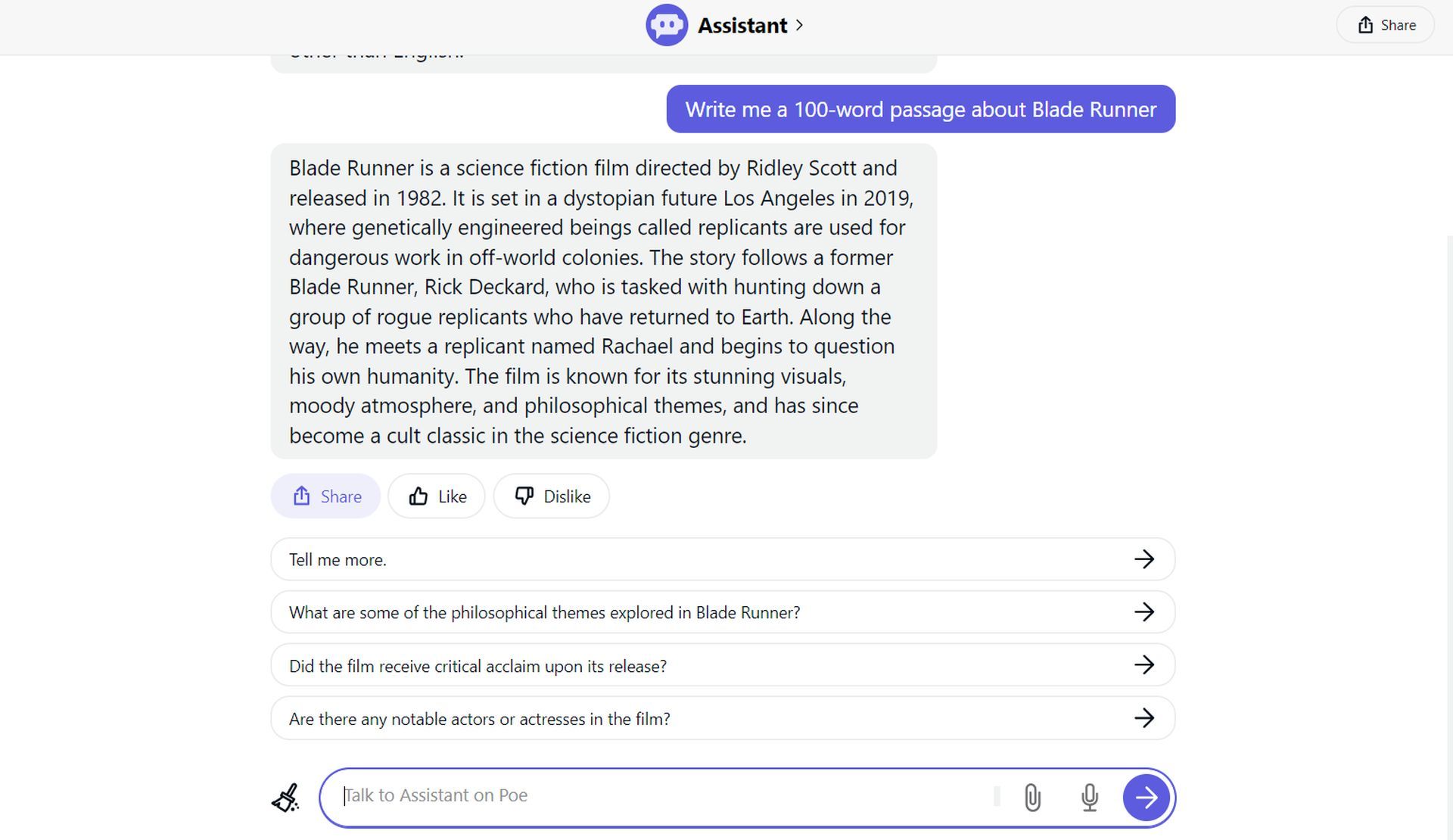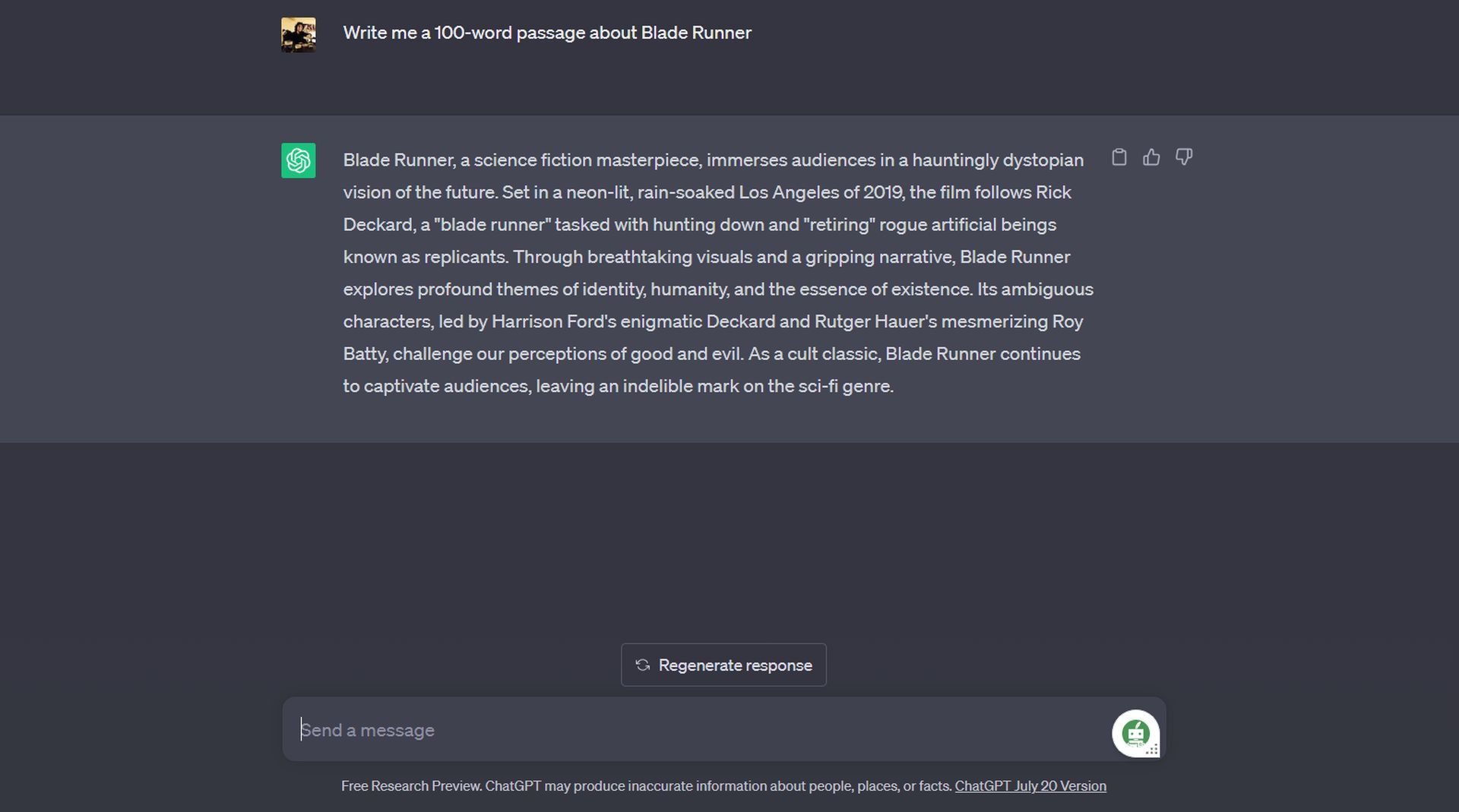The Poe AI API and Poe AI characters are designed with such in mind. They support you on your creative journey and are more than just tools. They allow you to create, edit, polish, and interact with your characters.
You can access and interact with several AI models, such as ChatGPT, GPT-4, and Claude, using the Poe AI API and Poe AI characters. Additionally, you can use pip3 to install the Poe API library, then log in with your token obtained from the Poe website to access the various bots.
In this article, we will explain what is Poe AI, how to use it, the differences between ChatGPT, and more.

What is Poe AI?
The well-known AI-infused chatbot web application Poe AI provides rapid responses to your questions. Built on the foundational technology of OpenAI GPT and Claude-version 1.2, this creative invention of Quora. Poe AI has a deep-learning architecture at its core that can process enormous amounts of data.
Sage, Claude+, Claude Instant, ChatGPT, Dragonfly, Bard, Bing, and NeevaAI are just a few of the outstanding collections of unique Chatbots that the platform boasts. While some of these chatbots are the products of sophisticated language models like the ground-breaking GPT-4, others are the creations of industry behemoths like Anthropic and Neeva.
Not only that, though. By enabling you to create your own bespoke bots using its instructions, Poe AI ups the ante on customization. You can create things with Poe AI rather than just using it. The options are endless, so get in.
How to use Poe AI?
Are you prepared to test out Poe AI? You may accomplish this by going to their website, creating an account there using your email, or just logging in with your current Apple or Google credentials. Once you’ve logged in, you can use a variety of AI bots, including Sage, GPT-4, Claude +, Claude-instant, ChatGPT, NeevaAI, and Dragonfly.
With Poe AI, you can do more than just converse; you can design prompts for writing essays, making jokes, or gathering data on a variety of topics. Here is a basic tutorial on how to use Poe AI and create original content using prompts:
- Visit the official Poe website first. Use your email, Google, or Apple account to log in.
- Choose the AI bot you want to employ next. Consider ChatGPT, one of the most well-liked AI chatbots.
- Enter your specific prompt in the text box after clicking the Search Prompt button. Write me a 100-word passage about Blade Runner, for instance.
- Watch the ChatGPT bot answer deftly to your command down below.
- By selecting the upward pointing ‘Try asking about’ arrow, you may also test out prompts made by other users.
- The generated content can be interacted with by being deleted, shared, liked, copied, or disliked. Simply select the desired choice by clicking on the three horizontal dots (…).
Be aware, though, that Poe AI limits free users’ usage. One message to GPT-4 and three to Claude can be sent each day by free users.
You can choose the premium subscription for $19.99 per month if you want unlimited access. You can access the GPT-4 and Claude+ language models with this premium plan, which will improve your experience.

How is the Poe AI API installed?
You must have Python 3 and pip installed on your system in order to use the Poe AI API.
Then enter the following command on your terminal:
pip3 install poe-api
The Poe-API library and all of its dependencies are installed with this command. Visit the library’s PyPI page or GitHub repository for a more thorough explanation and usage examples.
That’s not all, though. By looking through your browser’s cookies, you must find your token from the Poe website. Your login and access to the range of accessible bots depend on this token. This token can be used to interact with third-party bots or build your own bespoke bots using the library.

How can I utilize the Poe AI API?
Are you unsure of how to use the Poe AI API? Here is a detailed instruction:
- Using pip3, install the poe-API library.
- Visit the Poe website to locate your token. You may check this by looking through your browser’s cookies.
- Then import Poe and use your token to build a Poe Client instance. Utilize this code:
import Poe
client = poe.Client(“TOKEN_HERE”)
- You can either download the provided bots or make your own bespoke ones using your client instance.
- Use the client to communicate with the bots and stream their real-time responses.
Take advantage of Poe AI API’s strength to give life to your bespoke bots. Witness your thoughts come to life as you enjoy seamless communication.
Poe AI vs ChatGPT
The fundamental differences between Poe AI and ChatGPT are the conversational frameworks and methodologies they use. Poe is a rule-based chatbot that responds to human inquiries by following a predetermined set of rules. Contrarily, ChatGPT, an AI-powered chatbot, uses cutting-edge NLP and machine learning techniques to produce sophisticated, context-aware interactions.

We gave the same prompt to ChatGPT and Poe AI in order to demonstrate how their responses varied: ”Write me a 100-word long passage about Blade Runner.”

Conclusion
Poe AI and its API offer an impressive array of AI-powered chatbots, including ChatGPT, GPT-4, and Claude, which are not just tools but creative companions on your writing journey. The platform’s deep-learning architecture, built on the foundations of OpenAI GPT and Claude-version 1.2, enables it to process vast amounts of data. Moreover, Poe AI stands out by allowing users to not only interact with existing bots but also create their own bespoke bots using provided instructions, fostering a high level of customization.
By following a few simple steps, users can access the Poe AI website, choose from a variety of AI bots, and engage them with specific prompts. While free users have limited daily access, a premium subscription opens the door to unlimited usage, providing access to more powerful language models.
With Poe AI, writers can breathe life into their ideas and enjoy seamless communication with AI companions to enhance their creative process. Overall, Poe AI presents an exciting and innovative platform for writers and creators to explore the realm of AI-driven storytelling and expression.
Featured image credit: Pexels.





